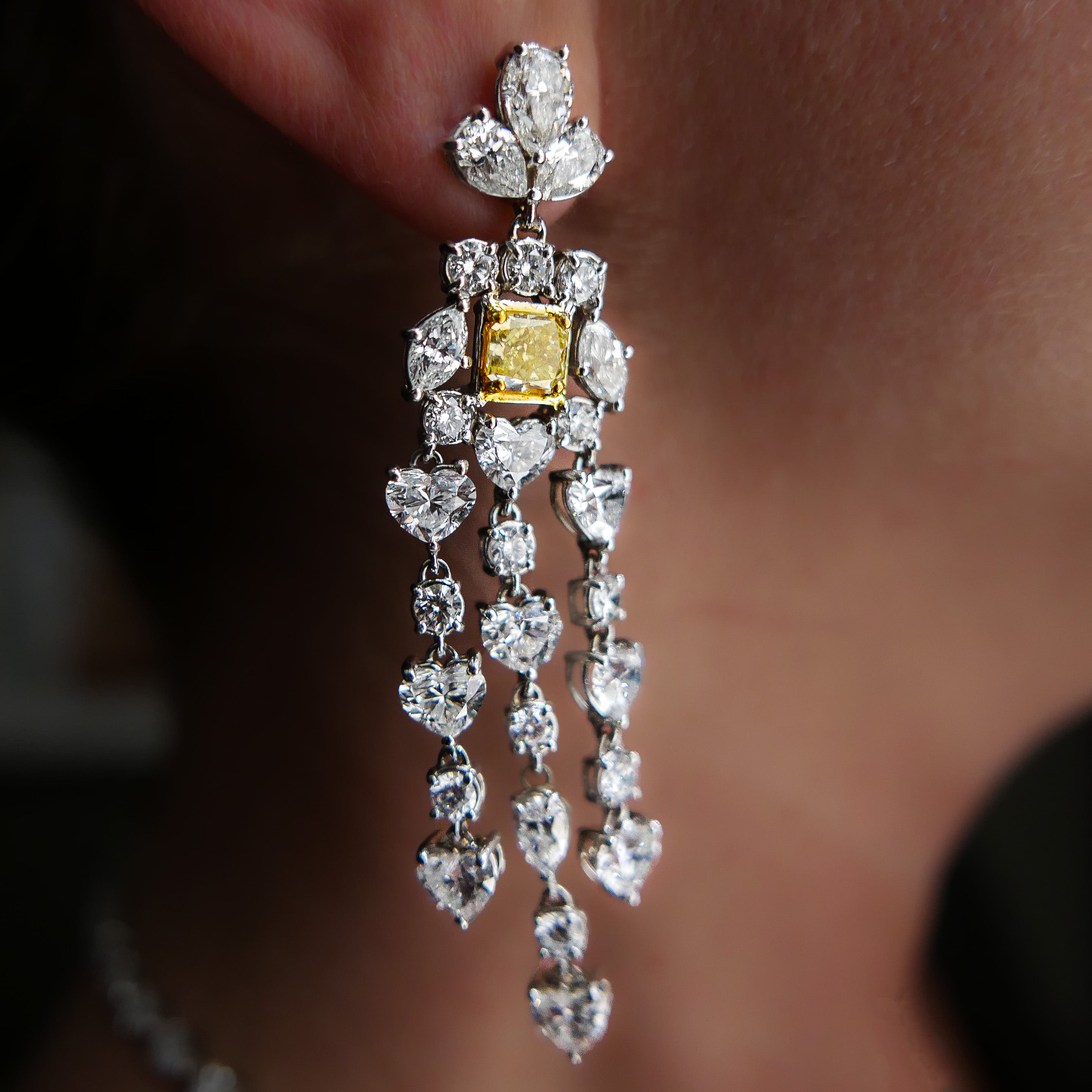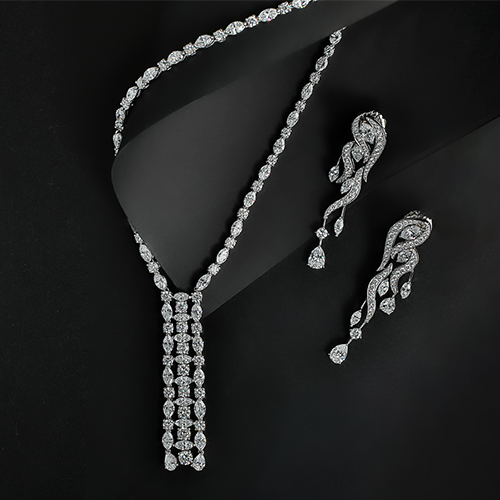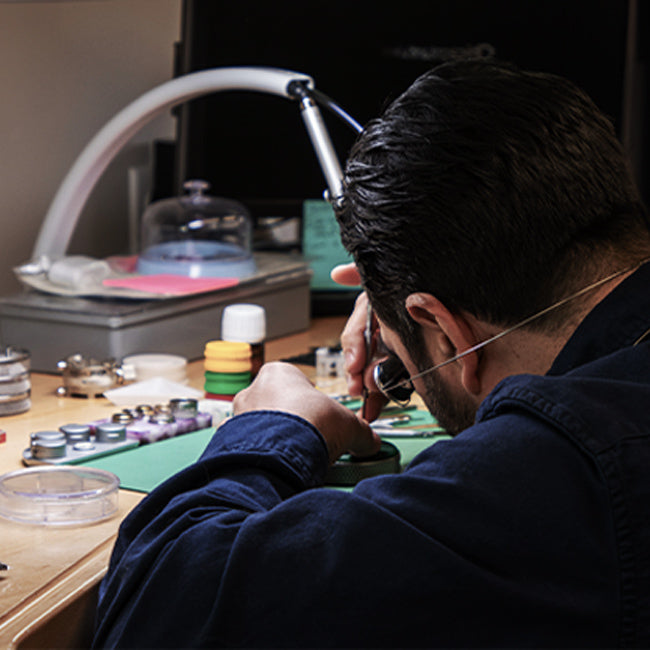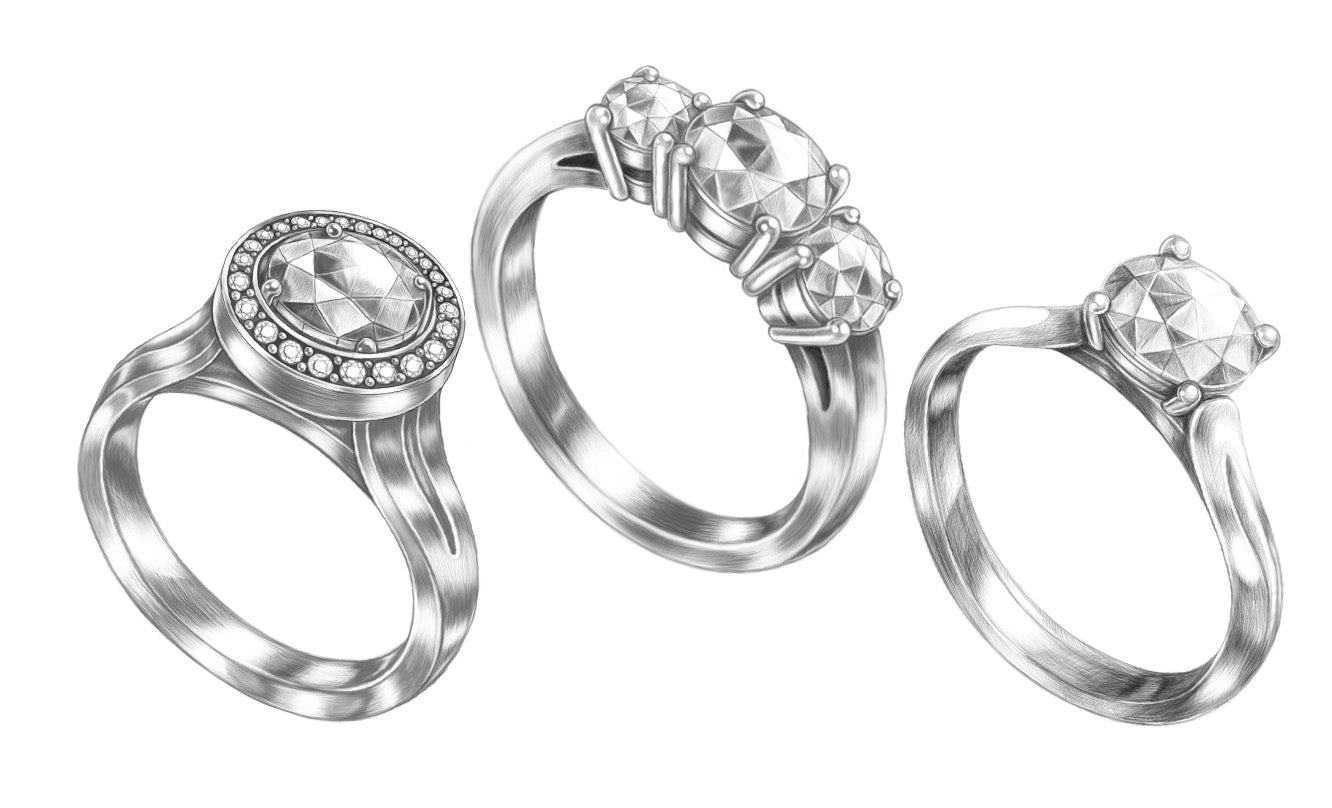
Burdeen's Jewelry Dictionary
Getting a piece of jewelry is a highly personal process. However, it can also be highly confusing for beginners as well. That’s why we’ve put together a short glossary of terms so you can be aware of common jewelry words that you may hear before you even set foot into our store. If there is a word that you would like to learn that’s not on this list, please contact the experts at Burdeen’s Jewelry. We'd be happy to help you and we'll probably put it on our list.
In addition to standard jewelers' terms, we have also put some terms that are special to the brands that we carry, so you can come fully armed to our store. If you have any questions, please feel free to call us at 847-459-8980 or refer to our contact us page located in our drop-down menu.
Alloy
An Alloy is simply the mixture of two or more metals that strengthens the metal and/or enhances the appearance of the metal. For example, all gold that’s in jewelry is not pure gold, because pure gold is simply too soft to be worn. Instead, it is mixed with copper, silver, palladium, zinc, nickel and other metals to strengthen it, and in other cases, change its appearance to create white gold and rose gold.
Bangle
A Bange Bracelet is a type of bracelet that is rigid and slides over the hand. These bracelets typically don't have clasps, however, that is not a steadfast rule. At Burdeen’s, we have several Bangles that are rigid and some that have clasps.
Bezel Setting
A diamond or gemstone that has a Bezel Setting has a metal rim that completely encircles the stone. As a result, only the crown and table of the stone can be seen.
Brilliance
A diamond’s “Brilliance” is the amount of sparkle or shine which is reflected from the diamond. A diamond’s cut is specifically created to accentuate the amount of brilliance the diamond has, so it refracts as much light as possible, making it sparkle in almost any amount of light.
Cabochon
Cabochon is a type of gemstone cut when the stone is polished rather than cut into hard edges. This creates a smooth, rounded dome-like surface, instead of having facets. This type of cut is relatively rare in diamonds but is used more frequently in colored gemstones.
Carat Weight
The weight of a diamond is measured in Carats. A single carat is equal to 0.2 grams. Bear in mind, these carats are different than gold karats, which is the purity measurement for gold alloy.
Cathedral Setting
This type of setting has triangular-shaped arches on each side of the diamond or gemstone of an engagement ring, vaguely reminiscent of a cathedral.
Choker Necklace
A Choker Necklace is approximately 15 inches long, keeping the necklace closer to the neck than traditionally longer necklaces. This type of necklace’s close proximity to the neck gives it the “choker” name.
Channel Setting
In a Channel Setting, diamonds or color gemstones are arranged in a row into a metal channel adjacent to one another, flowing side-by-side.
Clasp
A Clasp is used to fasten the end of bracelets, earrings, necklaces and watches. There are several types of clasps used in fine jewelry including barrel clasps, box clasps with locks, spring ring clasps, lobster clasps, s-hook clasps, toggle clasps, and pearl clasps.
Cluster Setting
Jewelers create a Cluster Setting when they arrange the diamonds closely together into a group, making them look like one larger stone. Typically, the diamond cluster involves round brilliant cut diamonds in a prong setting to better mimic the look of a larger stone. In addition, there is less use of metal highlights with the smaller diamonds for maximum fire from each small stone.
Crown
The Crown of a diamond or gemstone is the upper part of the stone, beneath the table and above the girdle.
Culet
The Culet of a diamond or gemstone is the small facet on the bottom point of a diamond, beneath the pavilion. However, not every finished diamond has a culet.
Facet
The Facet of a diamond or gemstone is the flat surface on any part of the diamond. The arrangement of these facets determines what type of cut the diamond or gemstone possesses. In addition, it also determines the amount of fire or brilliance it has.
Flawless
A flawless diamond has no visible inclusions or blemishes – even under 10x magnification. As a result, it has the highest grading on the diamond clarity scale.
Floating Diamonds
A piece of jewelry with 'Floating Diamonds' creates the illusion of unattached diamonds on a piece of jewelry. Chopard, in particular, has mastered this optical illusion with their Happy Diamonds Collection.
Flush Setting
A Flush Setting, also known as an Inlaid Setting, is created when a diamond or gemstone is placed inside of a hole of a metal surface making the table “flush,” or even, with the surface of the metal. This is also nicknamed a “rubbed” setting and has gained popularity due to its simple elegance.
Four C’s
The famous Four C’s of a diamond include color, clarity, cut and carat. These basic characteristics are used to establish the quality and value of diamonds for jewelers and jewelry lovers alike.
Girdle
The Girdle of a diamond or gemstone is the middle section of a diamond or gemstone.
Happy Diamonds®
First launched in 1976, the Chopard's Happy Diamonds line is one of the most successful and recognizeable lines in the watchmaker's lineup. It takes the Floating Diamonds concept to a higher concept as the diamonds actually move with every flick of the wrist. The tiny diamonds spin and move around the face of the watch, catching the light with every spin, mimicking 'droplets of water from a waterfall.'
Hardness
This aspect of a diamond or a gemstone is its ability to resist scratches. The Hardness of a precious stone is measured using the Moh's scale of hardness from 1-10, with 10 being the hardest.
Ideal Cut
An ideal cut diamond has the highest possible quality of proportions, symmetry and polish. As a result, it returns the maximum amount of light from the top of the diamond.
Inclusions
Diamond Inclusions, in the shape of fingerprints, can sometimes be found in diamonds and other precious stones. When a diamond is created over the millennia from carbon, it will be combined with other elements including minerals, gases, or other substances, creating these inclusions.
Invisible Setting
An Invisible Setting is created when grooves in each stone’s girdle slip into a metal framework below the surface that cannot be seen. This setting is popular with wedding rings and engagement rings.
Karat
The standard purity measurement for gold alloys where 24 karat gold is completely pure, but may be too soft for some uses. Meanwhile, 14-karat or 18-karat gold is mixed with other metal alloys to strengthen it and to enhance its appearance, or to create white gold or rose gold.
Moh's Scale of Mineral Hardness
This scale is used to measure the hardness, as well as the scratch resistance, of a diamond or gemstone. The Moh’s Scale ranges from 1-10, with 1 being the softest on the scale and 10 being the hardest.
Pavé Setting
Pave Settings are created when several small diamonds or gemstones are set closely together by small handcrafted prongs, so all the tables of these stones are set evenly with the metal surface. This creates a singular smooth surface from all of these stones.
Pavilion
The Pavilion of a diamond or gemstone is the bottom portion of a diamond, between the girdle and the culet of the stone.
Pink Gold
(See Rose Gold)
Platinum
This type of metal is actually four times more durable than gold, and, due to its hardness, is usually combined with other metals to make it easier to work with. Platinum purity scales are multiplied by 10, i.e., 950 Platinum is 95% pure whereas 900 Platinum is 90% pure. The metal is typically combined with coper, cobalt, iridium, rhodium, tungsten, or palladium.
Prong Setting
A Prong Setting is one of the most popular, if not the most popular, setting in the jewelry industry. Jewelers create a prong setting when a diamond or gemstone is mounted to the metal with prongs that wrap around its girdle, securing the crown of the stone.
Proportions
The relationship of a diamond's parts to one another, such as crown angle, crown height and table percentage, which ultimately determine a stone's brilliance.
Rose Gold
Rose Gold is created when pure gold is combined with more copper than other alloys, changing its color to a pinkish-reddish hue. Its history is based in Russia and is sometimes called Pink Gold due to its color.
Solitaire
Rings, pendants, earrings, bracelets, or necklaces that feature one diamond in its setting.
Symmetry
A diamond’s Symmetry refers to the exactness of its shape or, in other words, the alignment of the diamond's facets. The more symmetrical the stone’s facets are, the better the return of light, and the better the stone’s symmetry.
Table
The Table of a diamond or gemstone is the flat surface on the top of the stone.
Tension Setting
A Tension Setting diamond is created when it is held by pressure rather than prongs, a bezel, or any other traditional jewelry mounting. This type of setting is used because it shows off so much of the diamond, as it looks like it is simply floating in the air with no metal holding it in place.
White Gold
This type of gold is made by combining pure gold with copper, zinc and nickel (or palladium) alloy, such as rhodium, in order to give White Gold its bright silver color.
Yellow Gold
Yellow Gold is a type of gold that retains its natural yellow color. Even though this gold retains its natural color, it is still an alloy. However, it is typically combined with copper and silver alloys just to enhance durability only, rather than to change its appearance like white gold and rose gold.




